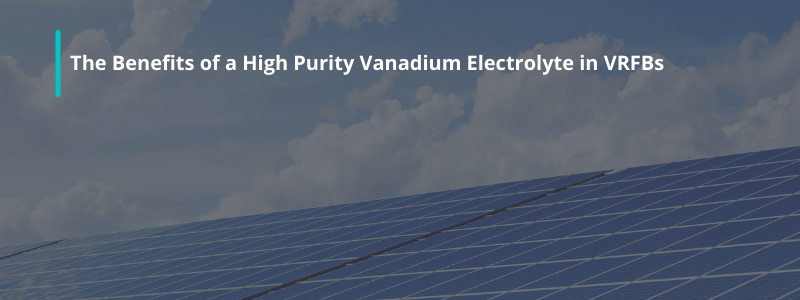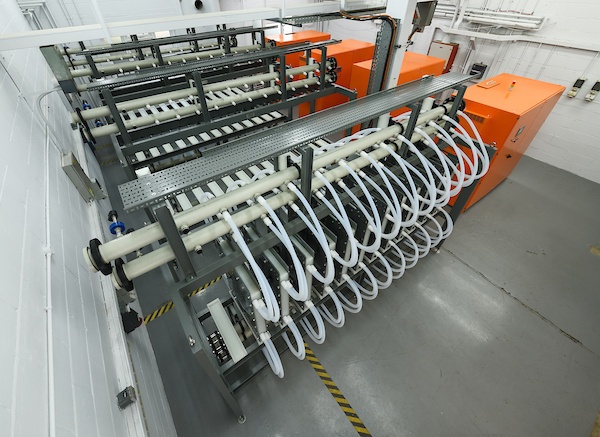With COP26 now at a close, in our last blog on the theme of climate change we discuss long duration battery storage solutions, today with a focus on VRFBs and the advantages of using a high purity electrolyte.
In the UK, industry sectors currently use approximately 368 TWh of energy per year of which 249 TWh is directly from fossil fuel. Coal is the most polluting form of energy, powering past coal and replacing it with clean energy sources is necessary for the transition to net zero. To make this happen electrically powered processes and long duration energy storage technologies must become dominant and ubiquitous in almost all industries, this being the ‘new industrial revolution’ that we will see over coming years.
Renewable energy is one form of a clean energy solution and is probably the most talked about in past years. Solar and wind power are fantastic sources of low-carbon energy, however they have their challenges, such as not a being a constant source. Therefore, energy storage solutions like VRFBs are needed so that power can be used on demand from these sources even on a rainy day for example or installed in off-grid locations.
Vanadium Redox Flow Batteries (VRFBs or sometimes called VRBs) are a rapidly growing commercial scale technology that can store energy from renewable sources and provide power on demand and round-the-clock with zero emissions. VRFBs have many advantages such as a long cycle lifetime, high storage capacity and efficiency, they are a revolutionary technology with strong potential to aid achieving a net zero future.
Vanadium electrolyte is one of the critical component of VRFBs. The purity of this electrolyte has an impact on the electrochemical performance and cost of the battery. Using a high purity vanadium electrolyte is key to increasing battery performance, capacity, and efficiency. High purity means free from by-products and chemical residue that can often be left behind and negatively impact battery stability, charging and discharging performance and ultimately battery lifetime.
When installing VRFBs into commercial and large-scale storage settings, use of a high purity vanadium electrolyte should be unquestionable. This is because operating a VRFB system that uses the cleanest vanadium electrolyte produced from a process that avoids the need for chemical reducing agents will reduce operating costs and provide greater efficiency overall.
Another economic benefit of VRFBs is the ability to continuously recycle and reuse the liquid electrolyte. This is a huge advantage compared to current processes for Li-ion batteries which have no established recycling practices. The recycling of vanadium electrolyte is a process that is simple to operate and is achieved by draining the electrolyte from the battery, processing it through the same electrolyzer plant that manufactured the original electrolyte. It is re-balanced and then returned back into a battery and is good for a further 20 years.
Renewable energy cannot be used effectively at large scale without energy storage technology. We understand the power of vanadium and we are passionate about the opportunities VRFBs offer as an energy storage technology for a low carbon future. Large scale implementation of battery storage can allow for renewable energy to be used at its full potential and is a critical step in making net zero possible. The electrolyte of a vanadium redox flow batteries (VRFBs) has a very competitive lifetime, strong recyclability, and minimal disposal issues. We are the leading supplier of vanadium electrolyte manufacturing equipment that produces the highest purity of vanadium electrolyte for use in VRFBs produced from a process that uses just electrons. Our electrochemical process is successful at production scale, with several projects already installed globally ranging from 1 million (30 MWh) to 8 million (240 MWh) litres per annum.
More information on our Vanadium Electrolyte Production Equipment for VRFBs can be seen here:
Large Scale Vanadium Electrolyzer Plant for VRFB Electrolyte Production


